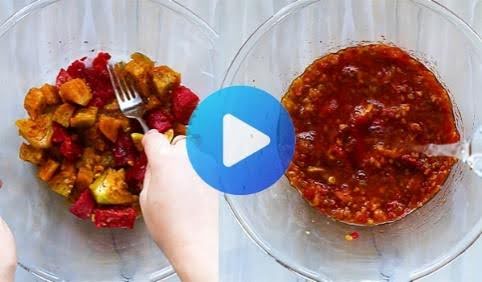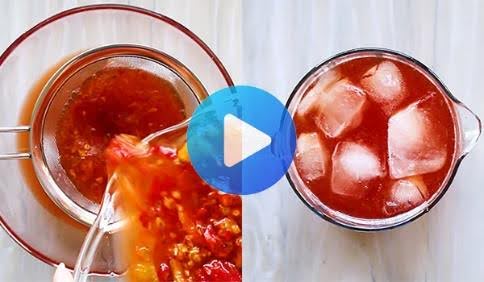Trying to lose weight often brings up one big problem: feeling hungry. When you cut back on calories, your stomach might start rumbling, making it hard to stick to your plan. It feels like a constant battle between wanting to reach your goals and wanting to eat. But what if there was a way to feel full and satisfied while still losing weight? That’s where weight loss smoothies come in.
I’ve worked with many women who struggle with hunger pangs when they change their eating habits. It’s completely normal. Your body is used to a certain amount of food, and it takes time to adjust. Smoothies, when made correctly, can be a fantastic tool in your weight loss journey. They offer a way to get important nutrients, feel full, and manage your calorie intake without feeling deprived. Let’s explore how these blended drinks can be so helpful.
Why Smoothies Can Help You Lose Weight
Smoothies are much more than just blended fruit. When you build them thoughtfully, they become powerhouses of nutrition that support your weight loss efforts in several ways.
Packed with Nutrients
One of the best things about smoothies is how many good things you can pack into one glass. Think about it: you can blend fruits, vegetables, protein sources, and healthy fats all together. This means you’re getting a wide range of vitamins, minerals, and antioxidants that your body needs to function well, especially when you’re reducing calories. Getting enough nutrients is vital for energy levels, metabolism, and overall health during weight loss. It’s much easier to blend a handful of spinach into a smoothie than it might be to eat a large salad, especially if you’re busy.
The Magic of Fiber
Fiber is a superstar when it comes to weight loss and feeling full. There are two main types of fiber, soluble and insoluble, and both are important. Soluble fiber dissolves in water and forms a gel-like substance in your gut. This gel slows down digestion, which helps you feel fuller for longer. It also helps stabilize blood sugar levels, preventing those energy crashes that can lead to cravings for sugary snacks. Insoluble fiber adds bulk to your stool, helping food move through your digestive system more efficiently and promoting regularity.
Where do you find fiber for your smoothies? Fruits (especially berries, apples, pears with skin), vegetables (spinach, kale, carrots, celery), nuts, seeds (chia seeds, flax seeds, hemp seeds), and oats are all excellent sources. By including high-fiber ingredients, your smoothie becomes much more satisfying than a low-fiber snack or drink with the same number of calories. This feeling of fullness, or satiety, is key to managing hunger and sticking to your calorie goals.
Protein Power for Fullness and Muscle
Protein is another critical nutrient for weight loss, particularly for women. Like fiber, protein is very satiating. It takes longer for your body to digest protein compared to carbohydrates, meaning you feel full for a longer period after consuming it. Protein also plays a role in regulating appetite hormones, sending signals to your brain that you’re satisfied.
Furthermore, protein is essential for maintaining muscle mass. When you lose weight, you risk losing muscle along with fat. This isn’t ideal because muscle tissue burns more calories at rest than fat tissue does. Keeping your muscle mass helps keep your metabolism running efficiently. For women, maintaining muscle is also important for strength, bone health, and body composition. Good protein sources for smoothies include protein powders (like whey, casein, or plant-based options such as pea, soy, or hemp), plain Greek yogurt, cottage cheese, tofu, or even certain seeds like hemp seeds. Adding a scoop of protein can transform your smoothie from a simple snack into a more substantial, hunger-fighting mini-meal.
Hydration Station
Staying hydrated is often overlooked in weight loss, but it’s very important. Sometimes, what we think is hunger is actually thirst. Smoothies, especially those made with a base of water, unsweetened almond milk, coconut water, or even blended cucumbers or celery, contribute significantly to your daily fluid intake. Proper hydration helps your metabolism function optimally, aids digestion, and can also help you feel fuller.
Managing Calories Wisely
Weight loss fundamentally comes down to consuming fewer calories than you burn. Smoothies can make calorie control easier because you decide exactly what goes into them. You can measure your ingredients and calculate the approximate calorie count. This allows you to create a filling, nutritious drink that fits perfectly within your daily calorie target. You can make a smoothie that’s low in calories but high in volume and nutrients, helping you feel satisfied without overconsuming energy. This is much harder to do with many processed snacks or restaurant meals where calories can be hidden and portion sizes large.
Quick and Convenient
Let’s be honest, life gets busy. Finding time to prepare healthy meals and snacks can be challenging. Smoothies are incredibly convenient. You can toss your ingredients into a blender, blend for a minute or two, and have a nutritious meal or snack ready to go. You can even prep smoothie packs in advance by portioning out fruits, vegetables, and seeds into freezer bags. In the morning, just grab a bag, add your liquid and protein source, blend, and you’re out the door. This convenience makes it easier to make healthy choices, even on your busiest days.
Building Your Best Weight Loss Smoothie
Not all smoothies are created equal, especially when weight loss is the goal. A smoothie loaded with sugary fruit juices, sweetened yogurts, and large amounts of high-sugar fruits can quickly become a calorie bomb that hinders your progress. The key is to build a balanced smoothie focused on nutrients, fiber, and protein. Here’s my guide to crafting the perfect weight loss blend:
Step 1: Choose Your Liquid Base (About 1 cup)
This is the foundation. Opt for low-calorie, unsweetened options.
- Water: Zero calories, hydrating.
- Unsweetened Almond Milk: Low in calories and fat, mild flavor.
- Unsweetened Cashew or Soy Milk: Other good low-calorie plant-based options.
- Coconut Water: Provides electrolytes, slightly sweet, but check for added sugars. Use in moderation due to natural sugars.
- Brewed Green Tea (Chilled): Adds antioxidants and potentially a small metabolic boost.
- Avoid: Fruit juices (even 100% juice is high in sugar), sweetened milks, regular dairy milk (can be higher in calories/sugar than unsweetened plant milks).
Step 2: Add Protein Power (1 serving)
This is crucial for satiety and muscle maintenance.
- Protein Powder: Whey, casein, or plant-based (pea, soy, hemp, brown rice). Choose one with minimal added sugar. Aim for 20-30 grams of protein per serving.
- Plain Greek Yogurt: High in protein, creamy texture. Choose 0% or low-fat, and always plain (unsweetened). (About 1/2 to 3/4 cup)
- Cottage Cheese: Another great dairy protein source, surprisingly good in smoothies. (About 1/2 cup)
- Silken Tofu: A good plant-based option, adds creaminess. (About 1/2 cup)
- Hemp Seeds: Offer protein and healthy fats. (About 2-3 tablespoons)
Step 3: Pack in Fiber and Greens (1-2 handfuls/servings)
Don’t skip the greens. They add nutrients and fiber with very few calories. Seeds boost fiber significantly.
- Leafy Greens: Spinach (mildest flavor), kale, romaine, Swiss chard. Start with spinach if you’re new to green smoothies.
- Chia Seeds: Excellent source of soluble fiber and omega-3 fats. They thicken the smoothie. (1-2 tablespoons)
- Flax Seeds (Ground): Provide fiber and omega-3s. Use ground flax for better nutrient absorption. (1-2 tablespoons)
- Psyllium Husk: Pure fiber, very effective for fullness, start with a small amount (1 teaspoon) and drink plenty of water.
- Oats (Rolled or Quick): Add soluble fiber and make the smoothie more substantial. (1/4 cup)
- Cooked Cauliflower (Frozen): Sounds strange, but adds creaminess and fiber without much taste.
Step 4: Include Healthy Fats (1 small serving)
Fats help with satiety and nutrient absorption, but they are calorie-dense, so portion control is key.
- Avocado: Adds amazing creaminess and healthy monounsaturated fats. (1/4 avocado)
- Nut Butter (Almond, Peanut, Cashew): Choose natural varieties with no added sugar or oils. (1 tablespoon)
- Nuts (Almonds, Walnuts): Add texture and healthy fats. (Small handful, about 10-15 almonds)
- Seeds (Pumpkin, Sunflower): Offer fats, fiber, and minerals. (1 tablespoon)
- Coconut Oil or MCT Oil: Use sparingly. (1 teaspoon)
Step 5: Add Fruit for Flavor (1/2 to 1 cup)
Fruit provides sweetness, vitamins, and some fiber. Focus on lower-sugar options.
- Berries (Strawberries, Blueberries, Raspberries, Blackberries): Best choices – lower in sugar, high in antioxidants and fiber. Frozen berries work great and make the smoothie cold.
- Peaches, Plums, Apricots: Good options.
- Apple or Pear (with skin): Adds fiber.
- Lower Sugar Choices: Use more berries and fewer high-sugar fruits.
- Higher Sugar Fruits (Use in smaller amounts, e.g., 1/4 to 1/2 serving): Banana (adds creaminess), mango, pineapple, grapes. Using frozen banana chunks can replace ice and add thickness.
Step 6: Flavor Boosters (Optional)
Enhance the taste without adding significant calories or sugar.
- Spices: Cinnamon (can help with blood sugar), ginger (anti-inflammatory), turmeric, nutmeg, cardamom.
- Unsweetened Cocoa Powder: For a chocolate flavor, rich in antioxidants.
- Vanilla Extract or Almond Extract: Adds flavor.
- Matcha Powder: Green tea powder for antioxidants and caffeine.
- Fresh Mint or Basil: Adds freshness.
- Lemon or Lime Juice/Zest: Brightens flavors.
Step 7: Ice (Optional)
Add 3-5 ice cubes if you’re using fresh fruit or prefer a colder, thicker smoothie. If using frozen fruit, you might not need any ice. Blend everything until smooth. If it’s too thick, add a little more liquid base. If it’s too thin, add more ice, frozen fruit, or a thickening agent like chia seeds.
You Might Be Interested In: Learning more about The Complete Smoothie Detox & Weight Loss Program
Common Smoothie Mistakes That Can Stall Weight Loss
While smoothies can be great, it’s easy to make mistakes that turn them into high-calorie, sugary drinks that work against your goals. Here are some common pitfalls I see:
Mistake 1: The Sugar Overload
This is the most common mistake. Loading up on too much fruit (especially high-sugar ones like bananas, mangoes, and pineapples), using fruit juice as a base, adding sweetened yogurts, or drizzling in honey, maple syrup, or agave nectar can send the sugar content soaring. While natural sugars from whole fruits are better than refined sugars, too much sugar of any kind contributes calories and can lead to blood sugar spikes and crashes, triggering more cravings.
- Fix: Stick to 1/2 to 1 cup of fruit per smoothie, prioritizing lower-sugar berries. Always use unsweetened liquid bases and protein sources. If you need extra sweetness, try a tiny bit of stevia or monk fruit sweetener, or rely on the natural sweetness of berries and spices like cinnamon.
Mistake 2: Skimping on Protein
A smoothie made mostly of fruits and liquids might taste good, but it won’t keep you full for long. Without enough protein, you’ll likely feel hungry again soon after drinking it.
- Fix: Always include a dedicated protein source like protein powder, Greek yogurt, cottage cheese, or tofu. Aim for at least 20 grams of protein to maximize satiety.
Mistake 3: Forgetting the Fiber
Similar to protein, fiber is essential for fullness. A smoothie lacking greens, seeds, or other fiber sources won’t be as satisfying or beneficial for digestion.
- Fix: Make sure to add a source of fiber like leafy greens (spinach, kale), chia seeds, flax seeds, oats, or psyllium husk.
Mistake 4: Hidden Sugars and Unhealthy Fats
Read labels carefully. Flavored yogurts, sweetened plant milks, some protein powders, and store-bought smoothie bases can be packed with added sugars. Adding too much high-fat nut butter, coconut oil, or full-fat dairy can also significantly increase the calorie count without necessarily providing proportional satiety.
- Fix: Always choose plain, unsweetened versions of ingredients. Measure high-fat additions like nut butters and oils carefully (e.g., 1 tablespoon of nut butter, 1 teaspoon of oil).
Mistake 5: Portion Distortion
Blenders can be big, and it’s easy to make a huge smoothie that contains two or even three servings without realizing it. Drinking a 32-ounce smoothie, even if made with healthy ingredients, can lead to consuming far more calories than you intended.
- Fix: Pay attention to serving sizes. Aim for a smoothie that’s around 12-16 ounces. Measure your ingredients, especially calorie-dense ones. Use a smaller glass or cup to help control portions visually.
Mistake 6: Relying Solely on Smoothies
Smoothies can be a great meal replacement or snack, but they shouldn’t be your only source of nutrition. Whole foods offer different textures and require chewing, which can also contribute to feelings of fullness and satisfaction. A diet consisting only of liquids might lack certain nutrients and the psychological satisfaction of eating solid food.
- Fix: Incorporate smoothies as one part of a balanced diet that also includes plenty of whole vegetables, fruits, lean proteins, and healthy fats in their solid forms. Use smoothies for one meal or snack per day, not for every meal.
Simple Weight Loss Smoothie Recipes
Here are a few balanced smoothie ideas to get you started. Feel free to adjust them based on your preferences and what you have on hand, keeping the basic principles in mind.
1. Green Goddess Detox Smoothie
This is packed with greens and fiber, but tastes refreshing.
- 1 cup water or unsweetened almond milk
- 1 scoop vanilla or unflavored protein powder
- 1 large handful spinach
- 1/2 small cucumber, chopped
- 1/4 avocado
- 1 tablespoon chia seeds
- 1/2 green apple, cored and chopped
- Juice of 1/4 lemon
- Optional: Few mint leaves, ice cubes
2. Berry Blast Protein Smoothie
A classic favorite, loaded with antioxidants and protein.
- 1 cup unsweetened almond milk or water
- 1 scoop vanilla or berry-flavored protein powder
- 1 cup mixed frozen berries (strawberries, blueberries, raspberries)
- 1 tablespoon ground flax seeds
- 1/4 cup plain Greek yogurt (optional, for extra creaminess and protein)
- Optional: Small handful spinach (you won’t taste it), ice cubes if using fresh berries
3. Healthy Chocolate Peanut Butter Dream
Satisfies cravings the healthy way.
- 1 cup unsweetened almond milk
- 1 scoop chocolate protein powder
- 1 tablespoon natural peanut butter (unsweetened)
- 1 tablespoon unsweetened cocoa powder
- 1 tablespoon chia seeds
- 1/4 frozen banana (for creaminess, optional) OR 1/4 cup frozen cauliflower florets
- Optional: Pinch of cinnamon, ice cubes
4. Tropical Ginger Refresher
A zesty, anti-inflammatory option.
- 1 cup coconut water (unsweetened) or water
- 1 scoop vanilla or unflavored protein powder
- 1/2 cup frozen mango chunks
- 1/2 cup frozen pineapple chunks
- 1 handful spinach or kale
- 1 teaspoon fresh grated ginger (or 1/2 tsp ground ginger)
- 1 tablespoon hemp seeds
- Optional: Squeeze of lime juice, ice cubes
Remember to blend all ingredients until smooth. Adjust liquid if needed.
How to Fit Smoothies into Your Weight Loss Plan
Smoothies are versatile. Here are some ways to incorporate them effectively:
- Breakfast Boost: Start your day with a protein-and-fiber-packed smoothie. It’s quick, easy, and sets a healthy tone for the day, keeping you full until lunch.
- Lunch Replacement: If you’re short on time or want a lighter lunch, a well-balanced smoothie can be a great option instead of grabbing unhealthy fast food.
- Post-Workout Recovery: A smoothie containing protein and carbohydrates is ideal for refueling your muscles after exercise. The protein aids muscle repair, while carbs replenish energy stores.
- Healthy Snack: A smaller smoothie (maybe half the size of a meal replacement) can be a good way to bridge the gap between meals and prevent overeating later. Ensure it still contains some protein and fiber.
- Pre-Planning: Prepare smoothie packs (ziplock bags with pre-portioned fruit, greens, seeds) and store them in the freezer. This makes daily smoothie prep incredibly fast.
Looking Beyond the Blender: A Whole-Body Approach
While nutrient-dense, satisfying smoothies are a powerful tool, achieving sustainable weight loss involves more than just what you put in your blender. Think of smoothies as one helpful component of a larger, healthier lifestyle.
For lasting results, it’s important to focus on a balanced diet overall. This means including a variety of whole foods like lean proteins (chicken, fish, beans, lentils), plenty of non-starchy vegetables (broccoli, peppers, zucchini, leafy greens), whole grains (quinoa, brown rice, oats), and healthy fats (nuts, seeds, olive oil, avocado) in your other meals. Learning about portion control for all meals is also key.
Regular physical activity is the other crucial piece of the puzzle. Aim for a combination of cardiovascular exercise (like brisk walking, jogging, cycling, swimming) to burn calories and improve heart health, and strength training (using weights, resistance bands, or your own body weight) to build and maintain that calorie-burning muscle mass. Finding activities you enjoy makes it much more likely you’ll stick with them. Even incorporating more movement into your daily routine, like taking the stairs or walking during breaks, makes a difference.
Don’t forget the importance of adequate sleep and stress management. Poor sleep and high stress levels can disrupt hormones that regulate appetite and metabolism, making weight loss more difficult. Aim for 7-9 hours of quality sleep per night and find healthy ways to cope with stress, such as meditation, yoga, deep breathing exercises, or spending time in nature.
Weight loss smoothies can absolutely help you feel less hungry and get great nutrition while cutting calories. They are convenient, customizable, and can be truly delicious. By building them correctly and incorporating them into a broader healthy lifestyle that includes balanced meals, regular exercise, good sleep, and stress management, you empower yourself to reach your weight loss goals in a sustainable and satisfying way.
Related YouTube Video
Final Thoughts
Using smoothies strategically can make a real difference in managing hunger while you work towards your weight loss goals. Remember that the best weight loss smoothies are those you make yourself, controlling the ingredients to maximize protein and fiber while minimizing sugar. They are a fantastic way to boost your nutrient intake easily. Think of them as a supportive tool, helping you stay full and energized as part of a complete healthy eating and activity plan. Consistency and balance are your best friends on this journey.







